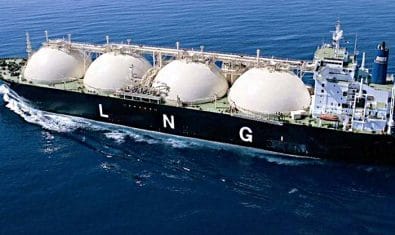One billion dollars. This glittering figure has been recently circling around the news in Pakistan and is associated with the potential and trajectory of the e-commerce industry in Pakistan. Look past the hype and self-praise and a sobering picture emerges.
Anyone telling you about the billion dollar figure about ecommerce industry is either clueless or they lie about it on purpose. Why? Keep reading to get an idea.
Competitive Advantage for Ecommerce Stores
If you look at developed markets, the edge that ecommerce companies get is usually in the form of reduced prices which they are able to offer when compared to physical stores — we will tell you how they offer reduced prices — and that’s how they outperform physical stores.
So imagine if Bata Shoes goes online and offers their shoes on the internet only, this will mean that they won’t require any sales and distribution network, outlets, franchises, staff, salaries and all sorts of expenses they have for the physical stores.
Essentially speaking, online stores are better placed to offer lesser prices for products as compared to physical outlets and that’s one of their biggest advantages.
Imagine if ecommerce companies, that reduce overall price of a product by 6-10%, transfer this discount to consumers and start offering prices that physical retail outlets will never be able to match?
This is only how Amazon or Best Buy are able to offer matchless prices and offer consumers lot better prices, experience and value than they get on physical stores.
This is the only way how ecommerce stores can create a difference — but unfortunately, it can not happen in Pakistan.
Below are the reasons:
Problem at the Core
Ecommerce companies won’t deal directly with manufacturers and maintain in-house inventory — like Amazon — because they just can’t take the credit risk. Dealing with manufacturer directly will mean that ecommerce stores will have to spend huge sums on buying goods and will have to come in direct competition with deep-pocketed distributors.
Just in case if you don’t know, distributors (in Pakistan and elsewhere) book products and goods in advance from manufacturer or importers against a margin of 6-10 percent. Then they sell the stock in few months and regain the investment with profits.
This involves tons of cash, distribution expertise and countless other factors that are known to traders only.
Ecommerce companies, to compete with distributor network of Pakistan, will have to invest a lot of money and attain all the man-power and expertise that’s required in sales and after-sales network.
But then there lies another problem, even if ecommerce companies invest billions in advance booking of goods, they will have to compete with distributors who don’t pay taxes — we don’t have to tell here why — this would make ecommerce stores an uncompetitive and non-viable business case.
Technically speaking, ecommerce companies will have to pay a few percent in taxes — that distributors don’t pay — and it would reduce their profit margins enough to instantly make them an unsustainable business proposition.
This is only why ecommerce stores only buy products when they are ordered, or they ask sellers to ship them directly to buyers and avoid the credit risk and any taxes.
For now, ecommerce stores in Pakistan are acting like marketplaces and not how Amazon or other giants operate in the West.
Tale of COD and Canceled Shipments
As we discussed, the initial advantage — through which ecommerce companies offer reduced prices — is gone as they buy goods from distributors and not the manufacturers directly.
This essentially means that ecommerce stores are left to make up their margins through other means, such as by reducing shipment costs etc.
However, in Pakistan, thanks to lower number of credit/debit cards and dirt low trust factor, customers tend to prefer COD (Cash on Delivery), which causes additional issues, such as:
- Courier companies hold cash for at least three weeks
- Increased number of order cancellation
Courier companies, after picking up cash from buyers, hold the funds for few weeks until they clear payments. This causes a cash-flow challenge. Then there’s another more disturbing challenge; since buyers haven’t paid for the order, the risk of order cancellation increases notably.
For every missed order or canceled shipment, ecommerce companies are bound to bear shipment charges (around Rs. 150) and wrapping costs (from Rs. 10 to Rs. 50) as an undue expense.
This overall situation indicates that there’s some serious design flaw that we must address to beat the challenges our ecommerce companies currently face.
You can share your thoughts in comments section to discuss the solutions.



























How India is performing in e-commerce business? Pak and India have similar market infrastructures.
India’s been doing great in e commerce sector total revenue of ecom sector have passed $30 billion mark in India and it might be worth more the $100 billion in 2020 in India.
http://www .emarketservices. com/start/News/International/news/E-Commerce-market-forecast-by-2020-in-India__7113.html
And just today even google have launched it’s own food delivery service in two cities here in India:
http://www .androidauthority. com/google-areo-launch-india-763765/
Do some research brother, they are way ahead of us. They have better logistics, better technology and better payment mechanism. Their market is massively huge, just when our economy is started with the start-up culture, they have a well matured start-up industry. Flipkart and Snap deal are good examples then they have Amazon India.
The question was ‘how’?
What are the mechanisms that are supporting their market
I will enlighten you, since I am an Indian.
1. The eCommerce concept has existed in India since around 2005.(I remember buying stuff back then as well). Flipkart has been in the country for 7-8 years, and Amazon has been here since several years now.
To say that India and Pakistan have similar market infrastructures would be a mistake, India is way ahead in terms of infrastructure even if you compare the India of 2010 to Pakistan of 2017 – no need to take an offence here, it’s true. If I order something online today from Chennai then I can expect delivery in Delhi the next day.
There are several homegrown payment providers that we don’t need to use COD that often. Even if you place an order using COD, even then you have an option to pay through card when the delivery boy comes(he carries a card swipe machine with him).
Not to mention due to sheer size of the Indian market, there is a huge push towards electronic payments by companies themselves. Even courier companies are competing against each other to grab a share of e-commerce market logistics.
Also, the availability of cheap internet both wired and wireless. India has the cheapest per gigabyte internet rates in the world, which means more users are able to get online by spending a lot lesser. Not to mention we have had Reliance Jio offering free LTE/4G internet to the users since last year. Also the government has been on a spree of laying optical fibres across India since 2011, which has further been pushed once the current government came into power.
Not to mention the government itself is very development centric, and is pushing out gaurantee free loans to entrepreneurs to start or expand businesses and hire new people, which means more employment and increased income.
Now a days , the major online shopping stores in pakistan offering special discounts on usage of debit cards of some famous banks , if you will use that debit card while purchasing , then you will have a discount instead of paying while delivery , so by this way of course they are earning less , but they have surety that order is genuine and customer will not cancel it before delivery , so they ship easily because they have already received the payment,
so also they are able to avoid payment hold problem from shipping companies too , they simply pay them their shipping charges,
i think that the really good system for getting real buyers,
Thanks,
Actually, Discount is borne by Card Issuing Banks and shopping stores are getting full payment to enable them earning same as COD.
look at infinix a totally unknown brand now well known in Pakistan due to daraz. I think the writer is missing the point that we can pay via credit and debt cards and every bank account now offers debt card if not credit one. easypaisa was good but now local pco people have stopped using it so it has become hard to transfer money via that service.
Alright some valid points but I guess its just half picture may be. It is a situation now but will never remain same as it was few years ago there wasn’t enough internet and smart phone penetration and there was a very small experimental e-com industry but the growth in this sector is pretty evident.
It will take time and in case of Pakistan it usually takes more time than any where else in the world but eventually it will be better. $1B might be a distant thought at the moment but this sector is going to take off I believe being bootstrapping an e-com setup I am very optimistic as well.
Most of problems mentioned have solutions, its not going to be easy but its not like they are impossible to overcome. How? It will be a long discussion not suitable for this comment, but I hope author or someone at propk will write about that too.
Customer service and after sale service is one area I can quickly mention which needs a lot of improvements and is one which can directly effect customer behavior and convert this emerging market into a big one with huge volumes which can compete with traditional distributors hence encouraging producers to give e-com a fair share of attention.
But unfortunately majority of e-com setups at the moment give least attention to customer service hence I met many people not happy with online purchase they made due to not so good customer service.
An easy payment solution can make a big difference. I second the idea of distributors mentioned in the article. Brands need to come on by their own platform and serve customers. It will built trust of customer for purchasing online.
Valid points.. Online payments don’t work a) because of trust issues, b) only Credit cards are allowed, for debit cards their is a cumbersome process to open it every time for txn. Mobile POS partially solves the problem of collecting payments electronically at the point of delivery so instead of courier company holding cash the money electronically gets transferred to the e-comm company. (work already underway with couple of courier companies to offer this at point of delivery)
this dude missed out that lesser prices is not the only reason amazon is doing good its the comfort of ordering things sitting at home and what did americans do before they had eCommerce you guys things they didnt have deep pocketed distribution companies. Ill informed writer.
Inventory management is the main cause of severe customer service issues. Thanks for pointing it out in the article. Companies cannot maintain inventories and pass on the responsibility to the vendor. That creates a communication gap also. The vendor cannot fulfill the order or they don’t have the order that is shown on the website and boom you have a ready made customer service issue. 80% of the issues arise because of faulty inventory or inventory that is not present…